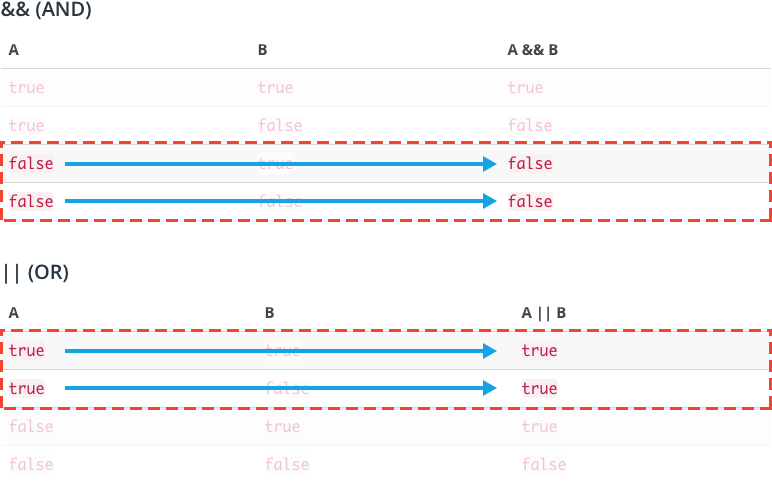11. Logical AND and OR
Truth tables
Logical AND and OR
Before you advance any further in the lesson, here’s the truth tables for logical AND ( && ) and logical OR ( || ).
&& (AND)
| A | B | A && B |
|---|---|---|
true |
true |
true |
true |
false |
false |
false |
true |
false |
false |
false |
false |
|| (OR)
| A | B | A || B |
|---|---|---|
true |
true |
true |
true |
false |
true |
false |
true |
true |
false |
false |
false |
Truth tables are used to represent the result of all the possible combinations of inputs in a logical expression. A represents the boolean value on the left-side of the expression and B represents the boolean value on the right-side of the expression.
Truth tables can be helpful for visualizing the different outcomes from a logical expression. However, do you notice anything peculiar about the truth tables for logical AND and OR?
Short-circuiting

In some scenarios, the value of B in logical AND and OR doesn't matter.
In both tables, there are specific scenarios where regardless of the value of B, the value of A is enough to satisfy the condition.
For example, if you look at A AND B, if A is false, then regardless of the value B, the total expression will always evaluate to false because both A and B must be true in order for the entire expression to be true.
This behavior is called short-circuiting because it describes the event when later arguments in a logical expression are not considered because the first argument already satisfies the condition.